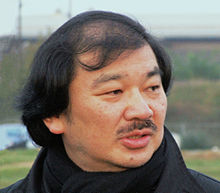
Shigeru Ban, a Japanese architect was known for his creative work with paper materials such as recycled cardboard tubes, designs houses and buildings out of paper tubes for disaster victims. He used recycled cardboard tubes because it is efficient and quick to build. He was in Time magazine and was named the 37th recipient of the Pritzker Architecture Prize, the most prestigious prize in modern architecture.
Ban interests in paper tubing structures around 1986. He found paper’s structural integrity to be much better than expected and it is also available everywhere in the world. During disaster times, restricted material availability and the increase of prices are a major concern. On the other hand, paper tubing is available and inexpensive because paper tubes are not use for building materials.
In 1994, paper tubing was used to make emergency shelters during the Rwanda refugee crisis. The United Nation contributed wood with aluminum piping, but it was expensive. The refugees decided to revert to cutting trees for building materials, but it created deforestation problems. One solution that can prevent theft, reserve money as well as conserve local trees are to use paper tubing. The paper log house was built on sandbag and the roof was made out of white sheets. The walls were made out of paper tubes which coated with waterproof polyurethane and flame resistant.

Another great design of Shigeru Ban is called The Paper Dome. It is a temporary church that was constructed out of paper tubes. It was built in 1995 for Takatori Catholic Church after the Great Hanshin Earthquake in Kobe, Japan, with a magnitude of 7.2. The place was not just for religious purposes, but it also uses for communal gatherings.
The Paper Dome (church) was constructed with a total of 58 tubes, 5 meters in height. Straight paper tube joists were connected by laminated timber joints.


The Cardboard Cathedral is another church made out of wood, glass, steel and 24 in diameter cardboard tubes, hence the church named. The church is 69 ft. tall and it contains 96 tubes, reinforced with laminated wood beams that are coat with water and flame resistant also and two inches gaps between the tubes so that light can filter inside. The church is big enough that it can seat around 700 people. The church is opened in August 2013 in Christchurch Central City, New Zealand.



The Expo 2000 was made of pressed paper tubes and wooden structure. The foundation of the architecture was made out of boxes of steel frames andlugs filled with sand, instead of concrete. Paper tubes were placed on a flat track on a temporary scaffold, then it was used to push the grid paper to the final form. After this, the previously curved wooden structure was placed in a position and connected to the main structure of the tubes then covered with a translucent membrane. The reason he used paper because it can be recycled and reused.




Shigeru Ban’s works have been all around the work. Many of his work included Aspen Art Museum-USA, Centre Pompidou-Metz-France, and Furniture House-Japan, China, and USA. Moreover, he received many awards and recognitions such asMainich Design Prize and Arnold W. Brunner Memorial Prize in Architecture.



wow! truly inspired work. thanks for the share
LikeLike